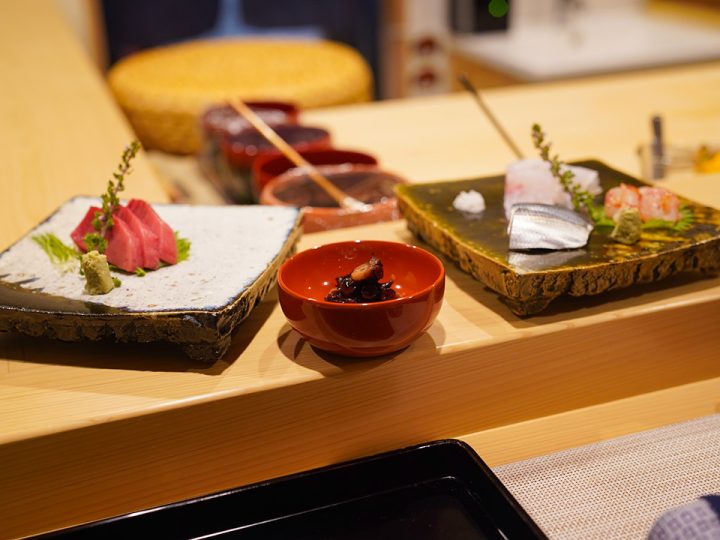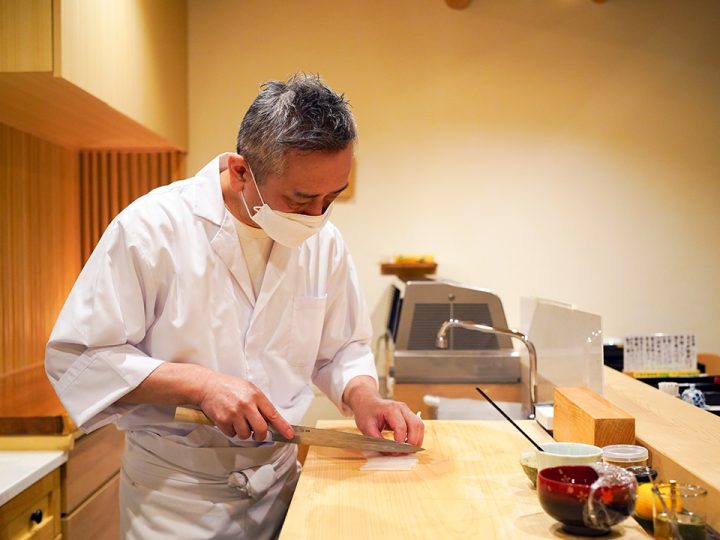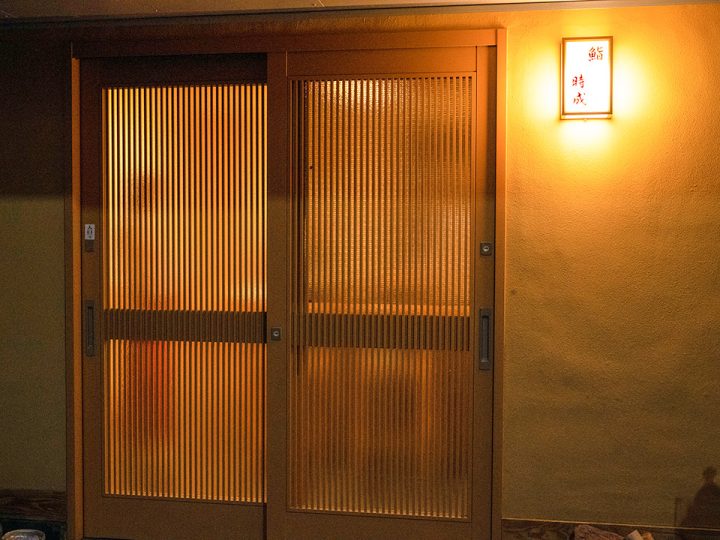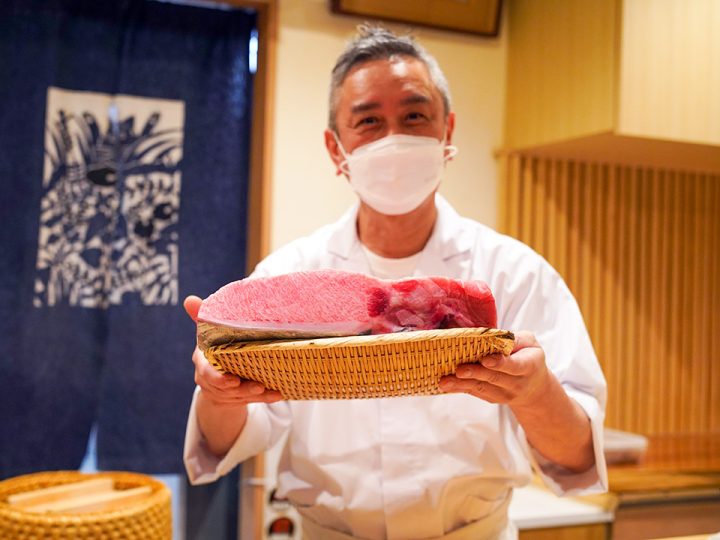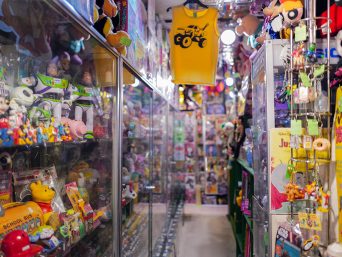- EAT & DRINK
- JAPANESE FOOD
- sushi & seafood
- TOKINARI SUSHI
- Price:
Omakase Nigiri course ¥15,950, Sashimi Snacks & Sushi course ¥19,800 (courses do not include drinks besides water and green tea)
- Address:
- 2 Chome-51-3 Koenji-minami, Suginami-ku, Tokyo
- Distance from Station:
- 6 minutes on foot from JR Koenji Station, south exit
- Phone:
- 03-3311-0339 (Use website to reserve)
- Open:
- 5:00pm - 10:00pm by reservation only, closed Tuesdays and Wednesdays
- Website:
- https://tokinari.com/ (external link)
- Communication:
- Limited English communication OK, use of Pocket Talk devices etc. OK
- no-smoking
TOKINARI SUSHI
With Attention to Freshness and Customer Consideration: You’ll Never Have the Same Course Twice at Tokinari
[published December 2023]
Tokinari Sushi is an Edo-style sushi restaurant in the Koenji neighborhood of Suginami ward in Tokyo. It’s located in a residential area only 6 minutes on foot from JR Koenji Station. The head sushi chef here, Narihito Sato, honed his craft for 29 years at a restaurant in the Tsukiji Fish Market of Tokyo, where the freshest catches came in daily (now the market is located in Toyosu). He then established Tokinari in 2015 in Okachimachi before moving to the current location in Koenji in 2017. Tokinari has been providing fresh, top-quality Edo-style sushi ever since. The restaurant is by reservation only, but you can make a reservation easily online in English as late as the previous day: Tokinari Reservation site (external link) A credit card is required to reserve and can be used for payment.
Tokinari stocks fresh seafood with its staff visiting the Toyosu Fish Market directly almost daily. Depending on the daily catch circumstances, the fish and seafood available at Tokinari also changes. One of the merits of fresh sushi is that you can feel the current season through eating it. Because of this, you will never have the same course twice at Tokinari Sushi, and you are bound to discover something new every time.
The menu is divided into two course selections, the “Omakase Nigiri” course where you entrust the freshest selection of nigiri sushi to the chef (15,950 yen), and the “Sashimi, Snack, and Sushi” which offers a bit more variety including snacks that pair well with sake (19,800 yen). It’s easy to make your reservation and course selection online using a credit card, and you can also note any allergy information or preferences (dislike wasabi, etc.). With its subtle, yet classy exterior and only 9 seats around a counter inside, you may feel nervous to enter but the appeal of Tokinari is that it’s a family-run restaurant and they will treat you warmly like family. Of course, the hospitality is also the level you can expect for a high-quality sushi restaurant.
10 different kinds of sake (Japanese rice wine) can be paired with your meal, and it’s also fun to choose from over 10 differently designed sake cups! For those who do not drink alcohol, green tea is complimentary and alcohol-free beverages can also suit sushi quite well to thoroughly enjoy all of the flavors.
When we visited Tokinari, our “Sashimi, Snack, and Sushi” course started off with an assorted sashimi plate that included longtooth grouper, a high-end fish caught in Nagasaki that is especially fatty in the winter months. From there we were served some things that non-Japanese may feel a bit adventurous to try, such as monkfish liver from Hokkaido and homemade “shiokara” (a paste made from salted fermented squid and fish entrails), but from there we went on to some delightful stewed octopus. This was softer and easier to eat than any other octopus you’ll have had, thanks to a secret method of tenderizing it with a daikon radish for a long period of time. Following that, Pacific bluefin tuna sashimi and the winter-favored steamed gnomefish were absolutely exquisite.
The next part of the course was one piece of sushi after another, for a total of 12 different kinds: Blackthroat seaperch, uni (sea urchin) atop squid, red maguro (tuna), mackerel from Awaji Island, otoro (high-quality fat under-belly of tuna), akagai (red clam), uni, shrimp, Kashima clam, conger eel, and tamagoyaki (rolled egg omelet), served with a bowl of shrimp miso soup.
As part of the seasonality of Tokinari’s menu, the vinegared rice used for the sushi was made using a special red vinegar made from fermented sake lees. The rice was thus a brownish color in appearance with a softer texture, and a flavor overflowing with creativity. Surprisingly, it doesn’t make you thirsty. This is due to the fact that there is no sugar added (usually vinegared sushi rice is a bit sweet), and uses a naturally-derived flavoring. This is a flavor you’ll want to keep coming back to for more, again and again.
To complete the meal, we were served a specially made, luxurious pear sorbet as a refreshing dessert.
Tokinari doesn’t have any specific strict manner rules. There is no need to act formally, just go and enjoy eating a meal among the peaceful atmosphere. Because this is Edo-style sushi, it is recommended to eat it with your hands, but it’s also OK to eat modern style with chopsticks. Also with Edo-sushi, soy sauce is already brushed on so there is no need to dip; simply pick up the sushi placed in front of you and eat it as is. For those who can’t eat a lot and prefer less rice, it is also possible to have the amount adjusted to your preference.
The sushi of a first-class sushi chef leaves you satisfied without feeling thirsty, and you’ll even lose sense of time passing. At Tokinari Sushi, things are wabi-sabi.
The warm smiles of the Sato family are also very welcoming. You can sense that Chef Sato is a gentleman with deep consideration for his customers, so you can surely relax and soak up Japanese culture at Tokinari. It’s also fine to make a trip to Ginza for high-class sushi, but the chance to have your fill of some of the most exquisite sushi in the unique Koenji neighborhood near Shinjuku is a valuable treat in itself.
ACCESS
writer: T. Shigeta (Tsubusa Suginami Food Blog (external link))
photographer: I. Fukuyama
translator: Greg
YOU ALSO MIGHT LIKE:
IN THE AREA:








